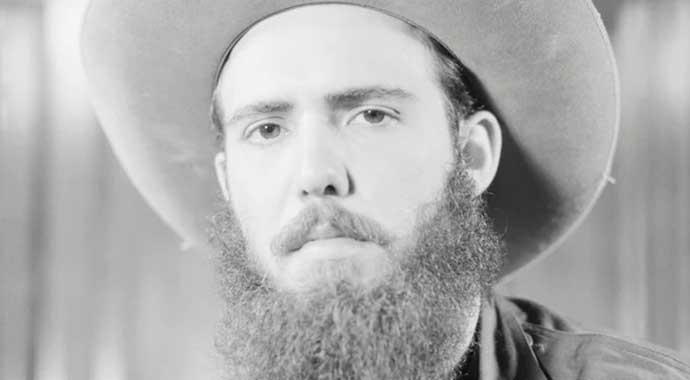 Aged 89, Rolando Cubela died in late August. If you’re wondering who he was, you’re probably not alone.
Aged 89, Rolando Cubela died in late August. If you’re wondering who he was, you’re probably not alone.
But, at one time, Cubela was an important figure. As the CIA’s man in Havana, he was a key player in ongoing American plots to kill Fidel Castro.
Cubela was born in Cuba in 1933, became involved in politics as a medical student and was a prominent figure in the Cuban revolution that overthrew 1950s dictator Fulgencio Batista. Afterwards, though, he became disillusioned at the direction taken by the newly installed Castro government. This, Cubela thought, wasn’t what the revolution was supposed to have been about.
Ultimately, the disenchantment led to his involvement with the CIA. Indeed, on the very day that John F. Kennedy was shot, there was a critical meeting in Paris between the CIA’s Nestor Sanchez and Cubela, the purpose of which was to set up the hit. And utilizing his personal access to Castro, Cubela himself was the designated hit man.
 |
| Related Stories |
| Remembering the Cuban Missile Crisis 60 years later
|
| The Bay of Pigs fiasco upended J.F.K.’s presidential honeymoon
|
| Death of a tyrant |
While the CIA’s interest in terminating Castro didn’t begin with the Kennedy administration, it certainly had a high profile during JFK’s White House sojourn. To the Kennedys, Castro was a thoroughly bad actor. A dictator based less than 100 miles offshore, he was an avowed enemy of the United States. In addition, he had humiliated JFK at the Bay of Pigs, a slight which the hyper-competitive Kennedys didn’t take lightly.
The agreement ending the October 1962 Cuban Missile Crisis involved Kennedy promising not to invade the island. But it didn’t preclude other actions. And with Castro out of the way, the situation with respect to Cuba would surely be less problematic. So notwithstanding some uneasiness about Cubela’s reliability, plans moved ahead.
Between September 6 and November 22, 1963, there were no fewer than four meetings between the CIA and Cubela. At the last of these, Cubela was to be given the proposed instrument for Castro’s demise – a ballpoint pen with a hidden needle which would deliver a lethal toxin.
For some keepers of the Kennedy flame, this whole episode is deeply embarrassing. It’s thus important to deny the involvement of either brother, even if you tie yourself in knots in the process. Here’s how JFK’s secretary of defense, Robert McNamara, subsequently went about it: “I do not believe that President Kennedy gave the authority. I also do not believe that the CIA would take such action without the authorization of the President. I know that is contradictory, but that is the way it is.”
The investigative journalist Edward Jay Epstein has a particular perspective on the whole business. He believes that Cubela was a “dangle,” someone who was “dispatched by Castro’s intelligence service to make contact with the CIA, feign disloyalty to Castro, and report back what he gleaned from his meetings.” As evidence, Epstein cites information provided by Miguel Mir, who served in Castro’s security office prior to defecting in 1992.
Former CIA analyst Brian Latell is of a similar mind. To quote: “Cubela was actually a Cuban double agent working for Fidel. He was a peculiar, contradictory man and there were unresolved doubts about him from the start.”
Whatever the reality, the CIA eventually cut Cubela loose in 1965, apparently for “security reasons.” However, the murkiness of it all persists.
Was Cubela really a double agent? Or was it one of those tangled situations worthy of intricate spy fiction?
Perhaps Cubela was a conflicted man, torn between his early devotion to Castro and his subsequent disillusionment. Or maybe he was a sincere plotter who was rumbled by the Cubans and compromised into acting as a double agent. Then, after the CIA cut him loose, he was no longer useful, which was why the Cubans put him on trial for treason in 1966.
Certainly, the fact of the trial suggests a complicated scenario. After all, you don’t publically punish one of your own loyal agents. It would be, to say the least, counterintuitive.
In any event, Cubela was sentenced to 25 years, released in 1979 and allowed to migrate to Spain. There, he practiced as a cardiologist.
After retiring, Cubela moved again, this time to Florida where he led a quiet life and kept a low profile. When he died in a Miami hospital this summer, he had lived almost six years longer than the man he was supposed to kill.
Troy Media columnist Pat Murphy casts a history buff’s eye at the goings-on in our world. Never cynical – well, perhaps a little bit.
For interview requests, click here.
The opinions expressed by our columnists and contributors are theirs alone and do not inherently or expressly reflect the views of our publication.
© Troy Media
Troy Media is an editorial content provider to media outlets and its own hosted community news outlets across Canada.

